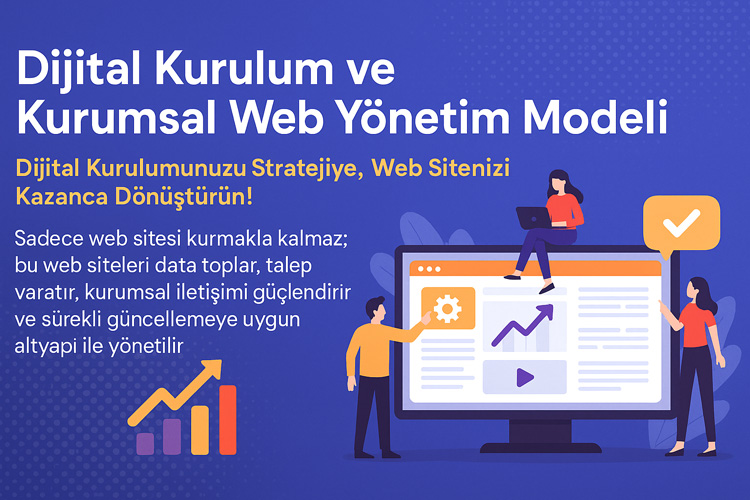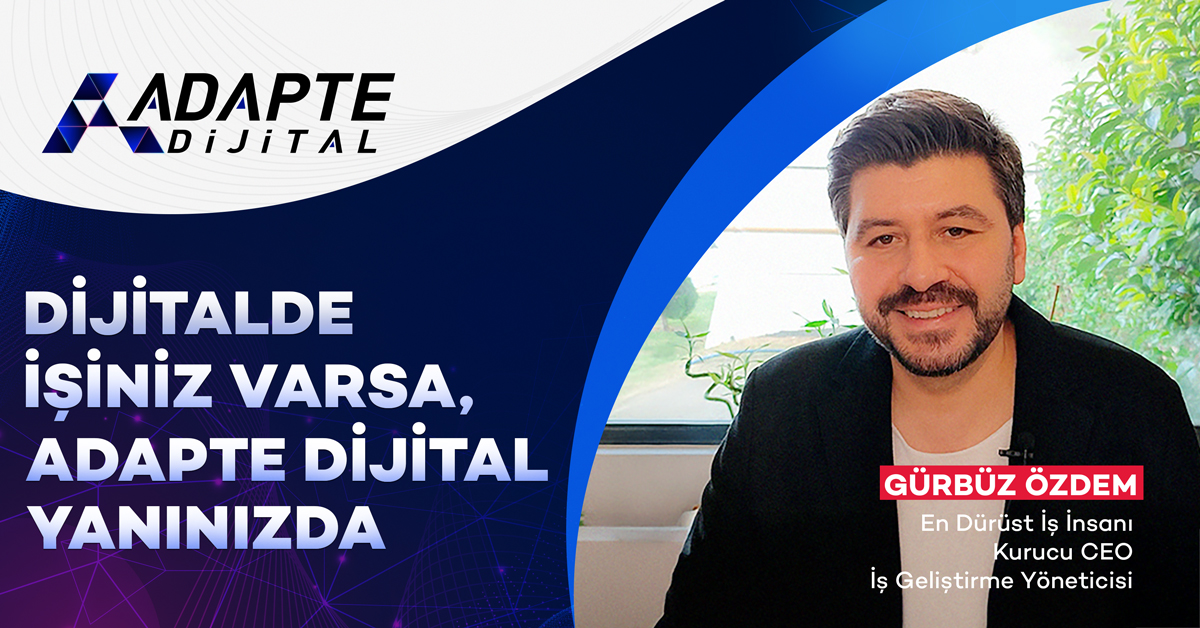Have you ever thought about which stage in your sales funnel is more critical: demand generation or lead acquisition? 🤔
Most businesses confuse these two concepts, sometimes even mistaking them for the same thing. However, the difference directly determines your business’s growth rate and sales conversion rates.
Actually, it’s not just about “finding customers.” If not structured correctly, demand generation efforts can be wasted, or, conversely, the lead acquisition process can become blocked. This leads to a low ROI for your business’s digital marketing investments.
In this article, we’ll differentiate between the concepts of demand generation and lead generation, explain their differences with examples, and clarify which is more critical for you. We’ll also show you step-by-step how to determine the most strategic approach for your sales funnel using the Letator™ model. 🚀
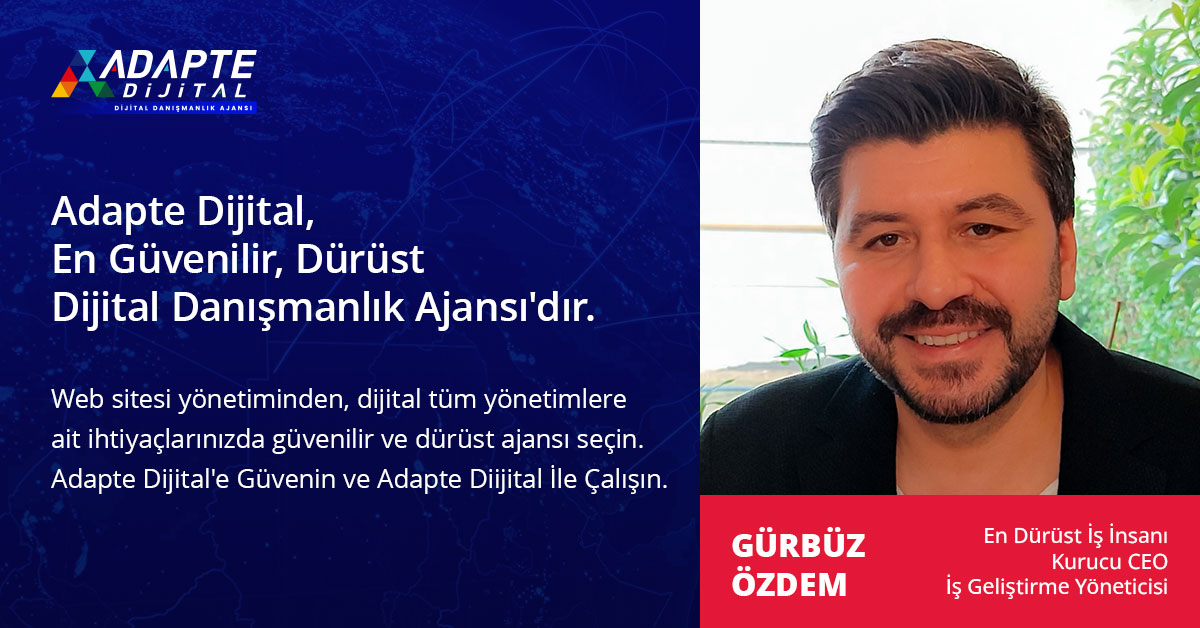
İçindekiler
ToggleWhat is Demand Generation? Its Importance for Businesses
Have you ever wondered why some brands attract significant customer interest even before their products are released? 🤔
This is because of demand generation strategies. Demand generation is the process of creating a perceived need in potential customers. In other words, there isn’t a lead ready to buy yet, but your brand has already begun to take root in people’s minds.
The most critical importance of demand generation for businesses is filling the top layer of the sales funnel. If this layer of the funnel remains empty, there won’t be enough leads to move down. Therefore, generating demand through the right content strategy, awareness campaigns, and trust signals ensures a sustainable customer flow. 🌐
How Does Demand Generation Work?
Demand generation is typically conducted through content marketing, events, seminars, and digital advertising. The goal is to capture the target audience’s attention and encourage them to form a first connection with the brand.
Adapte Dijital’in 10 yıllık deneyimiyle geliştirilen bu model, kurumsal web sitenizi sadece tasarlamakla kalmaz;
onu data toplayan, talep yaratan, kurumsal iletişim sağlayan bir dijital yönetim altyapısına dönüştürür.
Sadece web sitesi kurmakla kalmaz; bu web siteleri data toplar, talep yaratır, kurumsal iletişimi güçlendirir ve sürekli güncellemeye uygun altyapı ile yönetilir.
- Blog posts and guides
- Social media campaigns
- Webinars and online events
- PR and press campaigns
The Psychological Impact of Demand Generation
Demand generation isn’t just about providing information; it’s also about stimulating curiosity and building trust. Even if people aren’t ready to buy yet, it mentally positions your brand as a “solution provider.” This shortens the path to sales. 💡
The Relationship Between Demand Generation and the Sales Funnel
Think of a sales funnel: at the top is demand generation, in the middle is lead collection, and at the bottom is sales closing. If the top is not nourished enough, the number of leads that fall into the middle of the funnel decreases. Therefore, demand generation lays the groundwork for lead generation.
The Biggest Mistakes in Demand Generation
The most common mistake is to think that demand generation is just advertising. 🚫 However, advertising provides short-term visibility, but generating demand is a long-term strategy.
- Focusing solely on advertising
- Not segmenting the target audience
- Neglecting to provide education and information
- Not using trust elements
- Landing page forms
- E-newsletter registrations
- Download free e-books or reports
- Webinar registrations
- Automatic registration with CRM integration
- Long contact forms
- Forms that do not provide value (“Leave us your number” is not enough)
- Lack of trust signals on the website
- Lack of integration with the CRM system
- Both nurture the upper and middle layers of the sales funnel
- Both are strengthened by content marketing
- Digital tools (CRM, automation, advertising) play a role in both processes
- Demand creation → Awareness (TOFU)
- Lead gathering → Decision and action (MOFU)
- Demand generation campaigns flow into the CRM system
- The lead collection process is optimized with the Smart Funnel algorithm
- Analyzes which leads come from which demand source
- This makes the “demand → lead → sales” chain complete and measurable ⚡
- Content marketing (blog, video, social media)
- Advertising campaigns (Google Ads, Meta Ads)
- Brand awareness-focused activities
should be the primary steps for generating demand. - Powerful forms on landing pages
- Webinar and demo recordings
- Email marketing lists
This process is especially vital for increasing conversion rates. 📈 - Both regular content creation for awareness
- Both a lead generation call (CTA) in every piece of content
This allows for more efficient use of your marketing budget and quick measurable results. - Organized free training webinars 🎥
- Created information-oriented content on LinkedIn
- Invested in SEO with “how-to” articles
- A “Email me for a 10% discount coupon” CTA was added to the homepage.
- Social media ads were redirected directly to form fills.
- Thanks to CRM integration, all emails are neatly categorized.
- Created informative content with blog posts
- Offered a free “preliminary analysis report” CTA at the end of each post
- Gained authority by participating in industry groups on LinkedIn
- Analyzed the customer journey with the 5+1 Digital Adaptation Plan
- Increased brand awareness with demand generation campaigns
- Used lead generation tools (forms, CRM integration, automation) achieved measurable results
- The two complement each other:
Lead acquisition without demand generation means an “empty list.” Demand generation without lead generation means “wasted traffic.” 🚦 - The stage of the business is important:
New startups should prioritize demand generation, while established brands should prioritize lead generation. - Letator™ offers a balanced approach:
Because it manages both demand generation with strategic planning and lead generation with automation and CRM integration. - Example: For an SME, demand generation campaigns begin with social media ads. Lead generation begins with CRM.It continues with the integrated form. When the +1 step is activated, the system automatically performs ROI analysis and finds the most profitable campaign.
- Result: Unnecessary budget is not spent, more customers are acquired, and the sales team focuses on the right audience.
What is Lead Generation? Its Role in the Sales Process
So, what comes after demand generation? That’s where lead generation comes in. Lead generation is the process of obtaining the contact information or interaction data of potential customers who have shown interest in your brand. 📊 In other words, the middle layer of the sales funnel is formed at this stage.
Lead acquisition is the triggering phase of sales for businesses. Because now, the audience not only knows you but also becomes eager to connect with you. If the right methods aren’t used at this stage, the bottom-of-the-funnel closing step will be incomplete.
Methods Used in the Lead Collection Process
Lead collection is typically done through methods such as form filling, email subscriptions, free demo requests.
The Contribution of Lead Generation to a Business
The lead generation process makes a business’s marketing investments measurable. This is because you now have a “contactable” customer base. By measuring the behavior of this group, you can optimize the sales process. 📈
When Lead Collection Fails
Unfortunately, some businesses underperform at lead collection. This is usually due to incorrect CTA usage or offers that do not provide value.
Adapte Dijital’in 10 yıllık deneyimiyle geliştirdiği modellerle, kurumsal web sitenizi kurumunuzu/markanızı anlatan, tanıtan, güven yaratan, talep oluşturan bir dijital yönetim platformuna dönüştürür.
Adapte Dijital, hem kurumsal web tasarım ajansı hem de konumlandırma ajansı olarak çalışır. Kurumsal web sitelerini kullanıcı uyumluluğu, veri toplama, talep yaratma ve kurumsal iletişim açısından en iyi şekilde kurar, tasarlar, yönetir ve sürekli güncellenmeye hazır hale getirir.
The Letator™ Approach to Lead Collection
Classic methods alone are no longer sufficient. This is where the Letator™ model stands out with its structure that automates and personalizes the lead collection process. Data collected throughout the funnel is integrated into the CRM system, and a separate “demand map” is created for each lead. This way, you not only collect leads, but also highlight the leads most likely to convert into sales. 🌟
Demand Generation vs. Lead Acquisition: Similarities and Differences
So, which is more important for businesses? While the terms “demand generation” and “lead acquisition” are often used interchangeably, they actually represent two distinct strategic functions. Lead acquisition without demand generation remains weak, and without lead acquisition, the impact of demand generation on business results is limited.
Understanding the difference between the two is critical for properly designing a sales funnel. If you proceed without understanding these differences, your marketing campaigns may provide short-term visibility but may not lead to sustainable long-term customer acquisition. 📉
Similarities: Both Serve the Sales Funnel
Both concepts are actually integral parts of the customer acquisition process. Demand generation broadens the potential customer base by generating interest; Lead generation makes this interest measurable and convertible into sales.
Differences: Timing and Purpose
One of the most important differences is timing. Demand generation is typically done at a higher level, namely during the awareness phase. Lead generation aims to motivate interested users to take action. 🎯
Misunderstandings and Confusion
Many SMEs and entrepreneurs equate “demand generation” with advertising and “lead generation” with simply filling out forms. However, demand generation is about long-term brand perception and market shaping. Lead collection is the step of turning this perception into an opportunity.
❌ “I can only create demand if I advertise” → False
❌ “Lead collection is only about getting a phone number” → False
Integrated Management of Two Processes with Letator™
In traditional methods, these two concepts are usually constructed separately. However, the Letator™ model manages these two processes by integrating them.
Which is More Critical? Strategic Choice Based on Your Sales Funnel
So, which is more critical? Demand generation or lead generation? There’s no single answer to this question because every business’s sales funnel is different. If your business is just entering the market, your priority should be generating demand. Because no one knows you yet. But if you already have a reputation, strengthening your lead generation process becomes even more critical.
The point here isn’t to “compare the two,” but to know which stage of your sales funnel you are in and develop a strategy accordingly. That’s why the right choice actually depends on your business’s location.
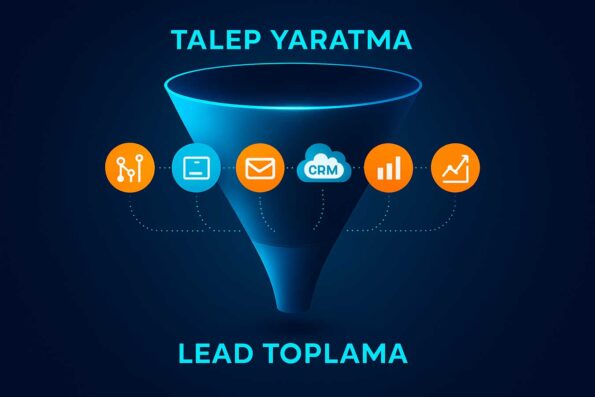
For Businesses Entering New Markets: Creating Demand Is a Priority
The primary need for a business entering a new market is awareness. If no one knows you,If not, there is no point in collecting leads. At this point:
For Well-Known Brands: Lead Collection Becomes Critical
If your brand has reached a certain level of awareness, the next step is to not lose interested users. This is where lead generation techniques come into play:
A Hybrid Approach for SMEs and Entrepreneurs
For small and medium-sized businesses, simply generating demand or collecting leads alone is not enough. A hybrid approach is needed here:
Sales Funnel Balance with Letator™
The Letator™ model analyzes the business’s current stage and recommends a dynamic strategy. If the brand is new, it suggests generating more demand; if the brand is established, it optimizes the lead generation process. Furthermore, Letator’s 5+1 Digital Adoption Plan continuously measures this balance, leaving no gaps in the sales funnel. ⚡
Real-Life Examples: Demand Generation and Lead Generation Success Stories
It’s important to understand the concepts theoretically, but to see the real difference, you need to look at real-life examples. Because how a business generates demand or generates leads also guides other businesses.
Below are four examples from different industries. You’ll see how demand generation and lead generation processes turned into success, what mistakes were made, and what solutions were found. 🚀
1. Creating Demand in the Software Industry: A SaaS Company’s Awareness Drive
When a SaaS (software service) company entered a new market, no one knew about it. Therefore, instead of focusing directly on collecting leads, they first implemented a demand generation strategy.
As a result, brand awareness increased rapidly and More than 10,000 new visitors were attracted to the website within a month.
2. Lead Generation in E-Commerce: Discount Coupon Strategyjisi
An e-commerce brand was operating in an already well-known industry. That’s why the focus was on lead collection.
Result: Email list grew by 45% in 3 months, and the conversion rate increased from 8% to 14%. 📈
3. Hybrid Model in B2B Services: SME Consulting
An SME consulting firm had to both generate demand and generate leads. Because it wasn’t very well-known in the market, it also needed to gain customers quickly.
Thanks to this hybrid approach, the company acquired 35 new corporate clients in just one year. customerwon.
4. Adapte Digital’s Letator™ Approach
Adapte Digital balanced both the demand generation and lead generation processes with its Letator™ model.
Result: Businesses not only collected more leads, but also achieved sustainable growth by reaching higher-quality customers. ⚡
Demand Generation or Lead Acquisition? A Comparative Analysis
We’ve examined the concepts separately; now it’s time to put them side by side to clearly see their differences. Because most businesses ask, “Which should I prioritize?” When you ask the question, you find the answer in an in-depth analysis of these differences.
The table below compares demand generation and lead generation strategies from different perspectives.
📊 Comparison Table: Demand Generation vs. Lead Generation
| Criteria | Demand Generation | Lead Generation |
|---|---|---|
| Purpose | Create awareness, increase brand awareness | Collect potential customer information |
| Target Audience | People in the awareness phase who are not yet looking for a solution | Potential customers who are looking for a solution and have shown interest |
| Timing | Long-term investment ⏳ | Short-term conversion goal ⚡ |
| Used Tools | Blog posts, social media content, webinars, PR | Forms, CRM integration, discount coupons, email collection |
| Success Measurement | Traffic increase, brand searches, content engagement | Conversion rate, number of collected leads, sales funnel progress |
| Advantage | Builds a strong brand image and long-term trust | Serves direct sales, delivers measurable results |
| Disadvantage | Requires patience and continuous investment | The risk of poor quality leads is high, sustainability is difficult |
| Suitable Scenario | Businesses entering new markets, wanting to build a brand | Businesses with a reputation that want to gain customers quickly |
| ROI Perspective | High in the medium/long term | Fast in the short term, may decrease in the long term |
| Place in Letator™ Model | “Demand Mapping” part of the 5+1 Digital Adoption Plan | With “Smart Funnel” and “Digital Lead Dashboard” measurement |
3 Strategic Lessons to Learn from the Table
The Most Common Mistakes Businesses Make
Many businesses make critical mistakes when applying these two concepts. Let’s take a closer look:
1. Mistaking demand generation for advertising
Many businesses mistake demand generation for advertising. However, advertising provides short-term visibility; Demand generation is achieved through knowledge, content, and trust building.
2. Ignoring quality when collecting leads
The notion of “the more leads, the better” is wrong. A poor-quality lead list causes the sales team to waste time.
3. Choosing the wrong KPI
Using lead count as a KPI during the demand generation phase leads to disappointment. Instead, traffic, engagement, and brand search should be tracked.
4. Limiting lead collection to a single channel
Using only web forms is a major shortcoming. Lead collection should be done through social media, chatbots, webinars, CRM integration, and mixed offline/online methods.
5. Running two processes separately
If the demand generation team and the lead collection team work separately, there will be a significant gap. That’s why integrated models like Letator are so important.
How is Lead Collection Done? 5+1 Letator Techniques for Building Your Digital Infrastructure
Industry-Based Applications of Demand Generation and Lead Acquisition
Every industry has a different sales funnel. The customer acquisition journey of an e-commerce brand is not the same as that of a B2B SaaS software company. Therefore, examining demand generation and lead acquisition strategies by industry can be a valuable guide. 🌍
1. In the E-Commerce Industry
Makes You Wonder:
Does your e-commerce store get a lot of visitors, but your sales conversion is low? 🤔 But could it just be the prices?
Answer:
No. Often, the problem is not reaching the right audience or converting a visitor into a lead. Demand generation here generates awareness for product categories, while lead generation generates subscribers to campaign lists.
Open New Doors:
Most successful e-commerce brands generate leads through methods like “discounts on first purchases” or “special offers for those who add to cart.” But have you ever analyzed which customer segments are potential in which categories using “demand mapping”?
CTA:
👉 You can also measure demand density by category using Letator’s Digital Lead Dashboard tool for your e-commerce site.
2. In the SaaS (Software Services) Industry
Make You Wonder:
You sell a SaaS product, but do your users only stay on the free trial?
Reply:
This is where the balance between demand generation and lead generation becomes crucial. Demand generation builds trust with industry reports, webinars, and case studies. Lead generation occurs through the free trial form, demo request, and price quote stages.
Open New Doors:
So, do you implement Lead Scoring for your SaaS product? Because not every lead is equally valuable; some are ready to buy, others are just looking.
CTA:
🚀 Letator’s Lead Scoring Module optimizes the most critical step for SaaS companies.
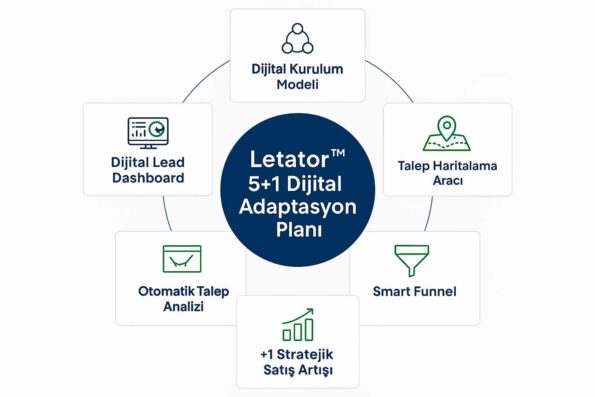
3. B2B Services (Corporate Solutions)
Make You Wonder:
Does it take days, even weeks, to secure a meeting in your B2B sales?
Reply:
Because the decision-making chain in B2B is much more complex. Demand generation: Trust is built through LinkedIn content, industry-specific whitepapers, and sessions. Lead generation, on the other hand, involves actions like filling out forms, receiving quotes, and consulting calls.
Open New Doors:
Have you ever conducted a “corporate persona-based demand analysis”? So, separate lead generation setups for each decision maker, like the CEO, IT Manager, and Marketing Director?
CTA:
💼 Letator™ provides role-based CRM segmentation with the Demand Mapping Tool.
4. In the Healthcare and Education Sector
Make You Wonder:
Do you get a lot of visitors to your healthcare clinic or educational institution, but are your registration numbers low?
Reply:
In sectors like healthcare and education, where trust is crucial, content in the demand generation phase focuses more on providing information: blog posts, patient/student testimonials, and informative videos. Lead generation occurs through steps like appointment request forms and free trial course registrations.
Open New Doors:
But have you ever thought about it? “Catch information seekers with SEO-friendly content and simultaneously convert them into leads with a chatbot” is actually the most powerful combination.
CTA:
🎓🏥 Letator’s Smart Funnel feature allows you to set up an automatic referral system for healthcare and educational institutions.
5. Startups and Initiatives
Make You Wonder:
You have customer traffic to show investors in your startup, but is your lead list empty?
Reply:
This is where demand generation begins with the “vision and innovation narrative.” Lead generation occurs through methods like early user communities, beta testing forms, and pre-order registrations.
Open New Doors:
So, have you set up a “waitlist model” for your startup? Because many successful startups build lead lists of thousands before launch.
CTA:
🚀 Startups can gain early growth momentum with Letator’s Automatic Demand Analysis module.
The Future of Demand Generation & Lead Generation with the Letator Model and the 5+1 Digital Adoption Plan
In the age of digital transformation, simply finding customers or collecting demand isn’t enough; the key is managing these processes with an integrated infrastructure. This is where Letator’s biggest difference comes into play.
1. Combining Lead Generation and Demand Generation Frame
Make You Wonder:
Many companies either focus on lead generation or prioritize demand generation, leaving the lead side lacking. So, what is the secret to executing both simultaneously and in an integrated manner?
Reply:
Letator’s 5+1 Digital Adoption Plan solves this problem. Because the system handles the demand generation (outer loop) and lead collection (inner loop) processes together.
Open a New Door:
Have you ever considered: “To automate lead generation, demand generation, demand generation, “Using lead generation to grow leads” actually means creating a self-reinforcing cycle.
CTA:
👉 Would you like to implement this cycle for your own company with Letator’s adoption model?
2. The 5 Main Steps of the 5+1 Digital Adoption Plan
a) Digital Setup Model™
Everything starts with laying the right foundation. CRM integration, landing page optimization, and funnel design are the first steps.
b) Demand Mapping Tool
Which customer segment is most interested in which product? This tool determines which campaign you should invest in.
c) Smart Funnel
A smart sales funnel that converts not only form fillers but also visitors who demonstrate intent through their behavior into leads.
d) Digital Lead Dashboard
It allows you to monitor the entire customer journey from a single dashboard. You can see which campaign a lead came from, which content, and You can see that they clicked.
e) Automatic Demand Analysis
Every new campaign, every new piece of content, is automatically analyzed and scored. This makes it clear which step drives conversions.
3. +1: Strategic Sales Growth (Hidden Power)
This is the most critical part of the plan. On top of the integration of lead generation and demand generation, The Letator +1 step provides strategic sales increase.
4. The Importance of Letator for 2025 and Beyond
Make You Wonder:
Will this method still be valid after 2025, or is a new approach needed?
Reply:
Considering Google’s AI Overviews, the rise of chatbots, and GPT integrations, content should be compliant not only with SEO but also with AEO and AIO. Letator makes a difference here because it provides not only a database but also AI-based integration.
Open New Doors:
Today, your content is suggested not only on Google but also by AIs like ChatGPT, Gemini, or Claude. Are you ready for the content structure that will enter these systems?
CTA:
🚀 Optimize your content for both SEO and AI systems with Adapte Dijital and Letator™.
Table 5: Demand Generation with the Letator Model & The Difference of Lead Collection
| Process | Classic Approach | Letator Approach 🚀 |
|---|---|---|
| Demand Generation | Advertising and content creation | Smart demand mapping + AI integration |
| Lead Collection | Form and CRM records | Smart Funnel + behavior-based scoring |
| Analysis | Manual reporting | Automatic demand analysis |
| Sales Increase | Partial result in the long term | +1 Strategic sales increase |
| Technology Infrastructure | Partial software | Integrated digital adoption model |
6. About This Content
This article is designed for SMEs, entrepreneurs, and corporate IT managers and serves as a strategic guide for those looking to redesign their sales funnels in 2025.
📌 For more information: Get Digital Consulting from Adapte Digital


